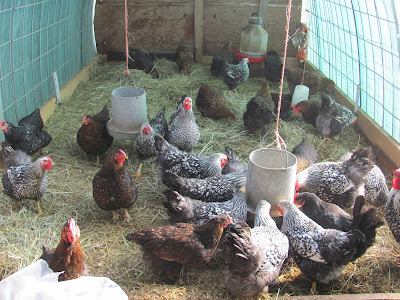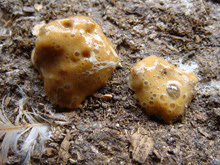Many people have the mind to
invest on poultry business, but they lack the knowledge of know how.
Some have
little idea but they are afraid of run into shortage at the end, you are lucky
for reading this article, just because what you need to start poultry
production are at your hand right now.
What you need to do is just keep reading
and you will have the potential here. Starting a chicken farming is a good job,
cheap means to boost eggs and chicks production.
This guide will help
you with starting a chicken farm, either for meat, eggs or chick production. It
is widely recognized globally that poultry and its product contribute to
improved human nutrition and food security by being a leading source of high
quality of protein in form of eggs and meat production.
It acts as a key
supplement to revenue from crops and other livestock enterprises, thus avoiding
over dependency on traditional commodities with inconsistent prices.
It has a
high potential to generate foreign exchange earnings through export of poultry
products to neighboring countries.
Materials requires in poultry production
Setting up a poultry farm
requires some materials in which without these materials poultry production
will definitely be impossible.
There are common materials, as well they are not
too expensive and so I believe everyone can avoid to have them. These are, Land,
building, feeders, drinkers and the poultry birds.
Land: The first thing to put into consideration in a land, without
this poultry production will not possible. Land will accommodate all other
materials that are needed in the farm.
Therefore, the first thing to have in
mind is land, depending on the project, land sizes are varying from one to
another.
Building: This is inform of house on the land where the poultry
birds are kept. Either you are planning deep litter system or caging system (battery
cage system).
You cannot do without a building in poultry production, though
they are of different buildings. What you need to do is to go far anyone that
suit your purpose.
Feeders and drinkers: These are other materials that are used in
poultry production, as the name implies they are used in feeding and to make
water available for them at all time.
Like other materials they are not to
underrate because they play a vital role in the production system.
Poultry birds: This is the foundation of any poultry farm, no birds
no poultry. Here is where many farmers having problem, just relax, you can get
your birds from ministry of agriculture in your area. Apart from this, you can
as well get poultry birds from breeders.
Poultry production and its management system
The system of management include
the following, Free range system and Intensive system.
These systems are used by medium
to large scale commercial enterprises, and are also used at the household
level. Birds are fully confined either in houses or cages.
Capital outlay is
higher and the birds are totally dependent on their owners for all their
requirements; production however is higher. There are three types of intensive systems:
Deep litter system: birds are fully confined with floor space
allowance of 3 to 4 birds/m2 within a house, but can move around freely.
The
floor is covered with a deep litter (a 5 to 10 cm deep layer) of grain husks
(maize or rice), straw, wood shavings or a similarly absorbent (but non-toxic)
material.
The fully enclosed system protects the birds from thieves and
predators and is suitable for specially selected commercial breeds of egg or
meat producing poultry (layers, breeder flocks and broilers).
Slatted floor system: wire or wooden slatted floors are used instead
of deep litter, which allow stocking rates to be increased to five birds/m2 of
floor space. Birds have reduced contact with droppings and are allowed some
freedom of movement.
Battery cage system: this is usually used for laying birds, which
are kept throughout their productive life in cages.
There is a high initial
capital investment, and the system is mostly confined to large-scale commercial
egg layer operations.
Free range system
80 percent of farmers keep
poultry in the first two extensive systems. Under free range conditions, the
birds are not confined and can scavenge for food over a wide area.
Rudimentary
shelters may be provided, and these may or may not be used. The birds may roost
outside, usually in trees, and nest in the bush. The flock contains birds of
different species and varying ages.
Draw out your effective business plan on poultry production.
Poultry business plan is like a
road map leading you to where you are going in your business. It will help you
know where you are at any point in time.
Therefore your business plan should
include:
1. Type of Bird you want to
concentrate on, in poultry production
Here you choose Chickens (Layers and Broilers). I
choose chicken because that is what this article is all about.
There are other
types of birds that are good for livestock business too, these include as Goose, Duck, Turkey,
etc.
2. Put down your area of
interest in a black and white about
poultry production
You cannot just be in all aspect
of poultry farming. You have to choose your area of interest where you would
like to concentrate your business on.
This will ensure high level of focus and
professionalism in the aspect you choose. If you can do two areas, no problem
you are good to go. Below are some of the major Niches in Poultry Farming
globally.
Layers Breeding which is egg production by Layers, this is very lucrative one
Hatchery which
has to do with breeding chicken for the purpose of hatching new chicks, here as well you
can make a lot of money
Poultry feed which is producing feeds for other poultry
farmers
3. Sort out a Location is one of the best things to do in
poultry production
This has a direct effect to your
startup cost. A location in a very remote rural area will cost far less than
the one close to the urban area.
Remote rural area with good road is the ideal
location as you will be free from regulatory agencies and drive down the cost
of labor too.
As a new person to Livestock
business, you don’t want to invest all your capital into buying lands in urban
area which may turn out not being used because Government policy is against
setting up poultry farm near residential/urban areas for health implication.
4. Investment Capital on poultry production
With location in mind, you now
have clearer idea of the capital required of you. Write down your detailed
capital and investment requirements for your poultry farming and set out to source for it.
Like every other farming
projects, the bigger you plan to start, the more investment required. You need
to decide on the level of capital investment you are willing to commit into
this business before starting.
Finally, if you follow what is in
this article by now you will know that poultry production is easy and as well a
lucrative business to invest on.









